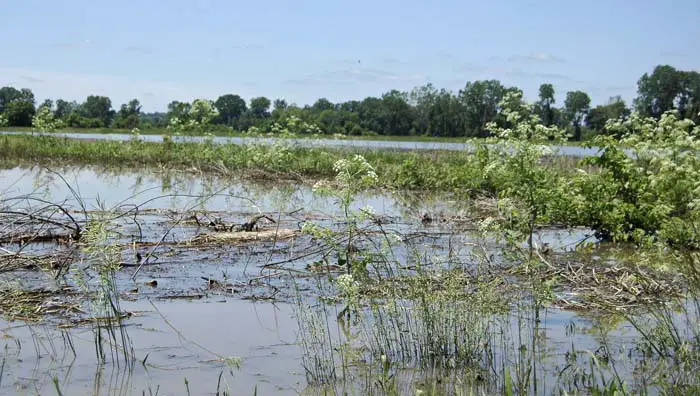The Nile River, for all its importance to the Ancient Egyptian, had no deity. It didn’t even have a name. Most simply called it “the river,” or “aur,” which means black. The closest thing to a god assigned to the Nile was Hapy, the god of the Inundation. Hapy had no temple. He was a fat, jubilant deity praised at the beginning of every flood cycle and mentioned only in passing the rest of the year.
Yet even though the Nile did not play a central part in Ancient Egyptian spirituality, it was the center of their social world view They oriented themselves in reference to the south, from whence the river came. The east bank, where the sun rose, was the side of birth. The west bank, where the sun set, was the side of death. All Ancient Egyptian tombs and pyramids were constructed on the west side of the Nile.
To Egyptians, flooding was normal; rain was weird. They called the downpours of other cultures “the Inundation in the sky”. Their 365-day calendar rose and fell with the waters of the Nile. In fact, a poor man was symbolized as having no boat. And when a Pharaoh was entombed, a small boat or model of a boat would be buried with him so that he might “pass to the other side”, that the cold waters of the Nile would bear him, the symbol of Egypt, in death as they had in life.

Nile Flooding
River Nile Facts
How long is the Nile River?
- The Nile River is actually 6695 kilometers (4184 miles) long. With such a long length, the Nile River is speculated to be the longest river in the world.
- It winds from Uganda to Ethiopia, flowing through a total of nine countries. While the Nile River is often associated with Egypt, it actually touches Ethiopia, Zaire, Kenya, Uganda, Tanzania, Rwanda, Burundi and Sudan, as well as Egypt.
- It’s only recent that the first known navigation team successfully followed the river from beginning to its end.
How did the ancient Egyptians use the Nile River?
- The Nile River has played an extremely important role in the civilization, life and history of the Egyptian nation.
- One of the most well known river Nile facts is the river’s ability to produce extremely fertile soil, which made it easy for cities and civilizations to spring up alongside the banks of the Nile.
- The fertile soil is created by the annual spring floods, when the Nile River overflows onto the banks.
- Much of the Egyptian nation consists of dry desert land. Throughout most of the year, very little rain falls on Egyptian deserts. This has remained true for thousands of years. The abundant Nile River provided much needed irrigation, even in ancient times.
- This waterway also provided a source of drinking water, as well as papyrus reeds that could be used for a variety of purposes such as paper and building materials.
- Today, exotic and sophisticated cities like Cairo grace the banks of the Nile River, as they have for thousands of years. Individuals interested in experiencing the Nile up close and personal can journey along the famous river aboard riverboat cruises that depart from numerous cities along the bank.





































